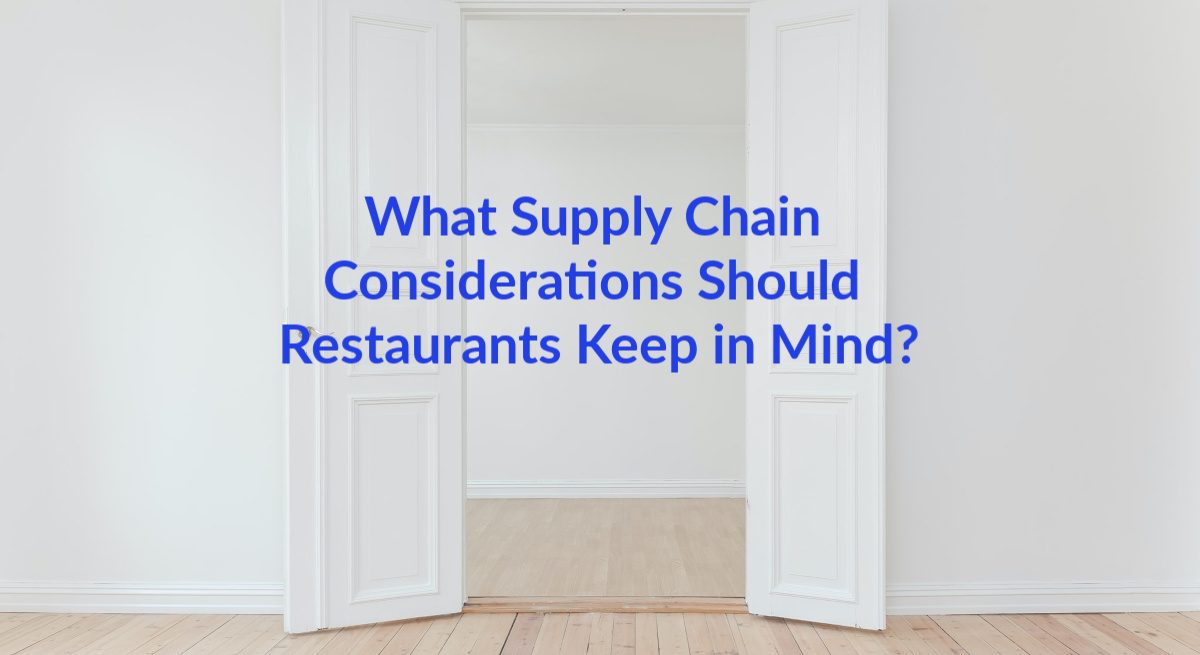My State Is Opening – What Supply Chain Considerations Should I Keep in Mind Moving Forward?
3 Min Read By Andy Rosenbloom
This edition of MRM's "Ask the Expert” features advice from Buyers Edge Platform.
Please send questions to Modern Restaurant Management (MRM) magazine Executive Editor Barbara Castiglia at bcastiglia@modernrestaurantmanagement.com.
Q: What Supply Chain Considerations Should I Keep in Mind Moving Forward?
A: As states and counties look to reopen across the US, one area restaurant operators are looking toward is their supply chain. As trends and ordering patterns have shifted, we’ve worked hard to identify areas most or least affected as the pandemic continues, and recommendations for the best ways operators can move forward. Below are a few key takeaways operators should consider as they seek to optimize their supply chains over the next few months.
Continue to pay attention to distributor delivery days and times: Currently, most distributors are letting the local distribution centers make the calls on delivery days and times. Operators should be receiving regular updates from their distributor rep on changes and should continue to communicate with them as they open on limited service. If you are not receiving these updates, call your distribution partners to find out if they have made any changes that might impact your business and orders. A few common changes we are seeing across majority of warehouses are:
-
No Saturday Deliveries
-
No Hot Shot (recovery) Deliveries
-
Delivery Windows & routes are shifting
-
Changes in minimum drop sizes
Keep an eye on product availability and continue to streamline your nenu with this in mind: As even more states open, we anticipate there will continue to be limited availability of some products. Engage your distribution partners and suppliers as soon as you have a targeted opening date and start working toward forecasting expected purchase volumes and order guide products. At the moment, many food and beverage manufacturers are stating that they are filling all orders with a focus and increase on to-go products, as off-premises meals have become the sole source of operator revenue. Be sure to check in with your distributor to find out what to-go products are available and adjust your menu and prices accordingly
Another way to ensure product availability and minimize supply chain disruptions as you reopen would be to continue to focus on a modified menu –guest favorites, high-profit items, and items that take a cross utilization of products. Focusing on your core menu will allow you to easily execute against guest favorites consistently and subbing in convenience products where applicable can keep your costs low, and help increase your shelf-stable inventory—a must have if a second wave hits and you must close down again.
Communicate your current situation with distributor partners: This is especially important on fresh proprietary products. If product has to be frozen due to slow downs or shut downs, work with your distributor to slow down the delivery frequency of that product. For disposables and other branded products, look to use in stock non-logo disposables until your logo or branded products come back in stock – and have your substitutes selected in advance. Many distributor employees are having to keep an eye on stock supplies and having pre-determined alternatives are one way to help during this time.
Determine and communicate realistic payment plans: Open communication with your distributor partners in terms of payment plans also will help facilitate a seamless transition as you prepare to reopen for in-store guests, albeit on a limited basis. For your credit terms, plan to work through a reasonable payment plan for the balance owed pre-coronavirus and highlight your plans moving forward as you re-open and bring back limited staff.
Your distributor partners may have additional options available if you’re having trouble determining the best payment path forward. If you are having trouble, be sure to also ask how they might be able to help.
Overall, your distributor partners are going through changes as well and the more everyone can work together, the stronger your operation can become post-COVID-19. While there might be some hiccups along the way, challenges can be overcome as long as everyone stays open and adaptable to shifting consumer preferences and business models.


